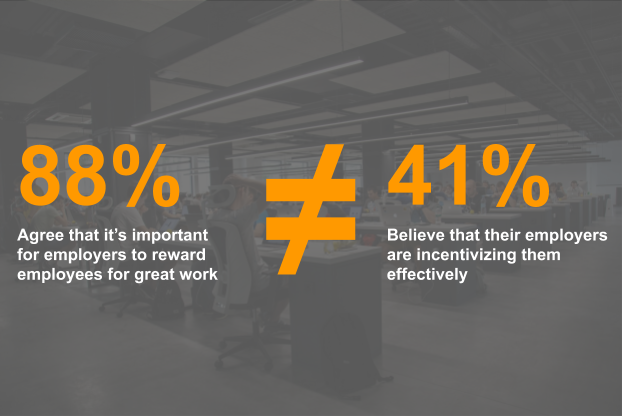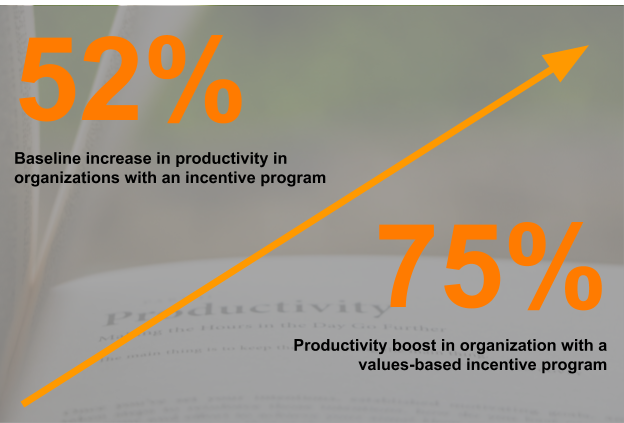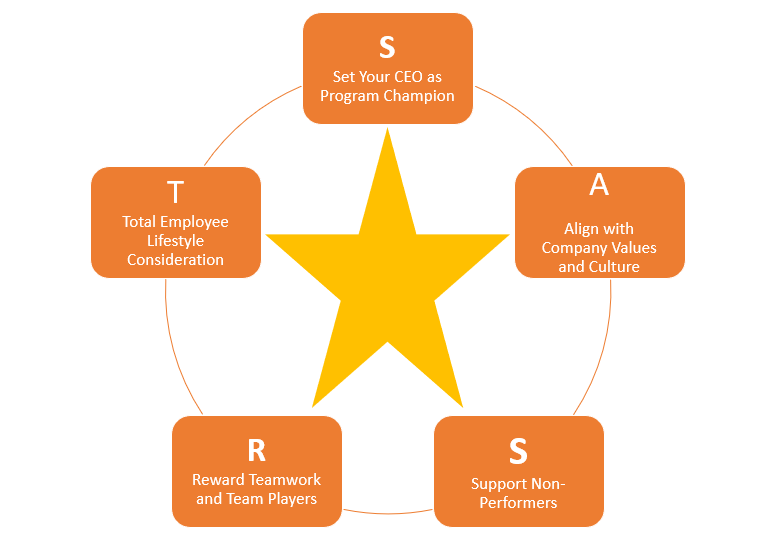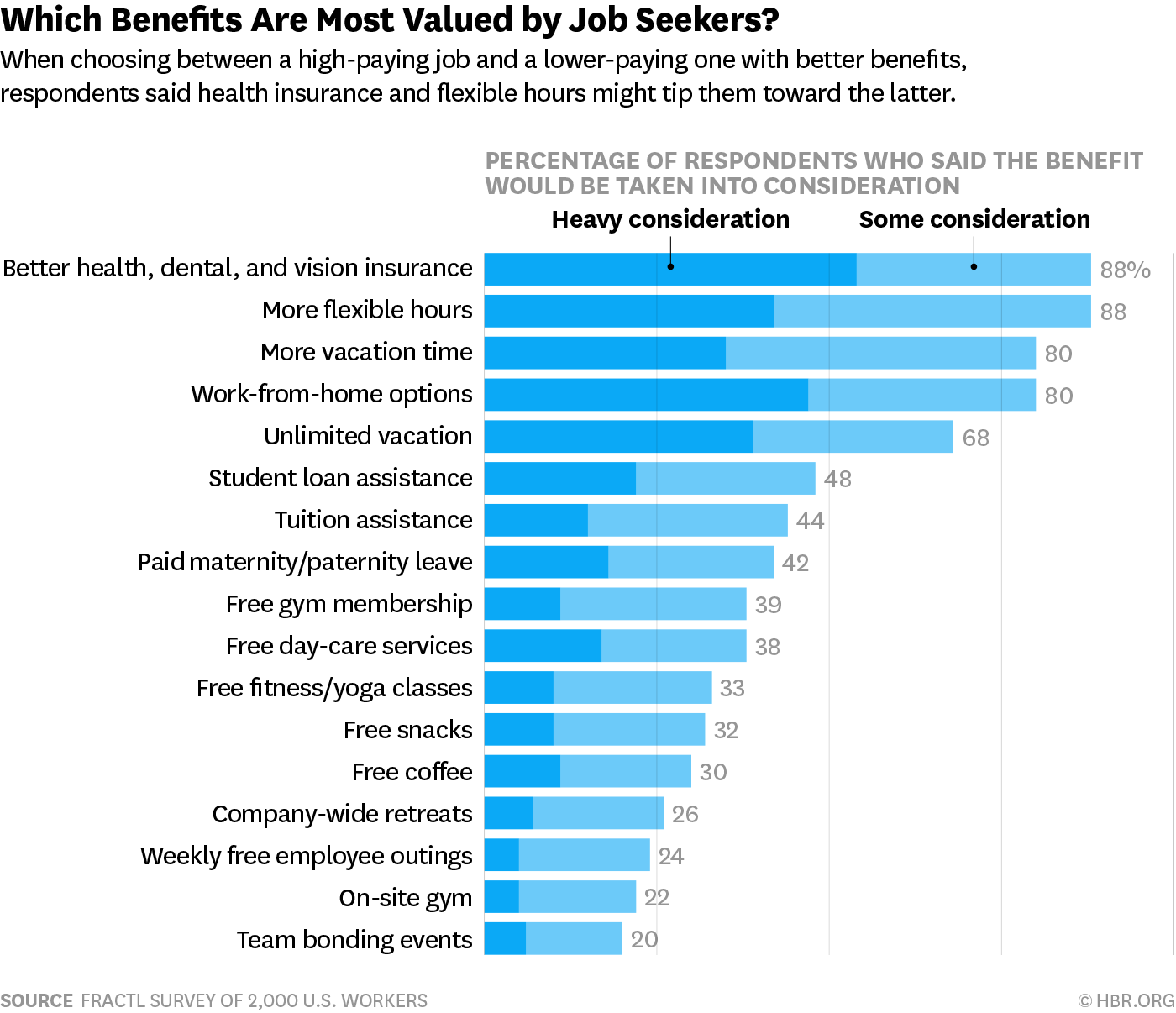
Carrot versus stick — this long-standing debate can go on forever, and HR experts can argue the pros and cons of both sides. As a manager, do you focus on rewarding employees for quality work, or do you emphasize reprimanding them for bad behavior?
College instructor and small business owner Kristen Hamlin says: “Simply put, the importance of rewarding employees in an organization is that it spurs people to work harder and be more productive. There is a saying that ‘people will always work harder when they know they are appreciated,’ and research backs it up.”
In the AttaCoin Annual Employee Appreciation Study, 88% of the respondents agree that “it’s important that employers reward employees for great work.” However, only 41% believe that their employers are effectively incentivizing them for going above and beyond what’s expected.

This disconnect is not only bad for employee morale, but it’s also bad for business. An effective employee incentive program is equally important to a business’ success as it is to the employees.
But why?
By the Numbers: The 4 Key Business Benefits of Offering Employee Incentives
Kristen Hamlin already alluded to a few research-backed benefits of incentivizing employees. Here are four key advantages that your organization can enjoy by taking advantage of an effective employee incentive program that works.
1. Up to 75% Boost in Productivity
According to the Society for Human Resource Management (SHRM), organizations with an incentive program see a 52% increase in productivity. Further, organizations with incentive programs linked to their company core values see a 75% productivity boost.

This rise in productivity is primarily driven by happier employees. There are a number of factors that contribute to employee happiness, but one survey revealed that 50% of employees associate workplace happiness to feeling appreciated.
“Businesses aware of the direct correlation between workplace satisfaction and business productivity should act accordingly if they want to boost their output and gain a competitive edge,” explains Geoff Pearce, managing consultant at NGA Human Resources.
2. 79% Higher Success Rate in Achieving Set Business Goals
“Our success is your success” is a catchphrase often used by companies to motivate their employees.
Incentivizing employees who contribute to the success of their companies fulfills this promise. Giving incentives to high-performing employees can be considered as an act of success sharing. This gives your workforce extra motivation to take ownership of their work. With an employee rewards and recognition program, they know that every business objective they help hit will have a personal ROI to them.
It’s not surprising that organizations with effective employee incentive programs demonstrate a 79% higher success rate in terms of meeting their business objectives.
3. 66% Better Top Talent Retention
It’s not just the employees who are engaged in a cutthroat competition to snag the best job openings. Companies are also competing to attract top talent.
Today’s talent shortage is so prevalent that even Fortune 500 companies don’t feel that they are able to secure the best members of the workforce. And when they do, many don’t feel confident that they can retain them for years to come.
 Sound familiar?
Sound familiar?
This is another area that an effective employee incentive program can remedy. According to USA Today, 66% of top talents will stay with their current organization if they feel they are receiving the right rewards and recognition.
Additionally, a properly planned and executed employee incentive program also helps with hiring. According to the Incentive Research Foundation: “Organizations that offer properly structured incentive programs can attract and retain higher quality workers than other organizations.”
4. 37% More Sales
This is specific to your sales team, but there’s no reason that it can’t apply to the other members of your team.
As mentioned, well-rewarded employees are happy employees. Happy employees deliver high-level customer service. Great customer service results in happier and loyal customers, which means higher customer lifetime value.
Not All Employee Incentive Programs Are Created Equal
Now that you know the key business benefits of having an effective employee incentive program in place, you might be raring to dole out rewards to your team.
Hang on.
There’s more to incentivizing employees than meets the eye. It’s not just about giving gift cards or hefty bonuses. For instance, a financial incentive scheme without proper planning and a solid strategic backbone may drive employees to do unethical things. “When strong financial incentives are in place, many employees will cross ethical boundaries to earn them, convincing themselves that the ends justify the means. When we value a reward, we often choose the shortest, easiest path to attaining it — and then persuade ourselves that we did no wrong,” explains an article from the University of Pennsylvania’s Wharton School of Business.
So, what do you do? We created a simple and easy-to-remember approach to designing an effective employee incentive program. Since any incentive scheme is aimed toward recognizing the stars in your organization, you just need to remember precisely that word: S.T.A.R.S.

Let’s go through these one-by-one:
S: Set Your CEO as Program Champion
Let’s be real.
There’s a different feeling of elation when employees are complemented by the CEO compared to when recognition comes from supervisors or managers. If the highest executive in the company recognizes an employee for a job well done, that employee has done something exceptionally well.
Designating your CEO as the champion of your employee incentive program doesn’t only make it legitimate, it communicates your company’s dedication to rewarding its top-performing employees. It also ensures that the company’s growth and success is directly proportional to the incentives that the employees receive.
There’s an entire section about setting CEOs as employee recognition champions in Fond’s The Insider’s Guide to Employee Recognition eBook, so make sure to check it out.
T: Total Employee Lifestyle Consideration
In terms of benefits, a number of employees put a premium on things that let them lead the lifestyle they want, such as flexible work schedules, more vacation time, and wellness activities.

In fact, hourly workers now prefer organizations that emphasize work-life balance over companies that offer great pay. There’s also a growing need for flexible hours and work-from-home options, especially among millennials.
 In short, effective employee incentive programs that complement the lifestyle of your employees and empower them to pursue their interests and passions are just as effective — or more effective — than monetary rewards. These incentives may also be more cost-effective for your organization.
In short, effective employee incentive programs that complement the lifestyle of your employees and empower them to pursue their interests and passions are just as effective — or more effective — than monetary rewards. These incentives may also be more cost-effective for your organization.
Just make sure that you have the ability to still track and monitor employee productivity if and when you decide to implement incentives that support the clamor for work-life balance and flexible work hours.
For example, having a cloud-based time tracking app will equip you better to offer work-life balance-oriented incentives to high-performing team members. This technology enables your employees to log their work hours and activities when telecommuting so you can track and monitor their activities even when working remotely.
A: Align with Company Core Values and Culture
Rewarding good performance is already a given.

But what about rewarding good behavior? Good work ethic? Recognizing employees who embody what your organization represents? Incentivizing those who live and breathe your company’s values?
At its core, an employee incentive program will primarily focus on shining the spotlight to those who went above and beyond to contribute to the success of the organizations they work for. However, the really strong, effective, far-reaching, and sustainable incentive programs are those that are anchored on your values and culture.
How does aligning your incentive program with your company culture and values benefit your company?
For one, it allows your culture to scale with your company’s growth. Often, an organization’s culture gets compromised when it grows, getting drowned as its operations expand. However, when you constantly reward employee behaviors who embody your culture and values, you’re creating bastions among your employees who will protect the core principles of who you are as an organization.
R: Reward Teamwork and Team Players
If there is one critique against a formalized employee incentive program in the workplace, it would be that it could foster unhealthy competition among colleagues.
According to BambooHR, “Your incentive program needs to preserve teamwork in your organization. Rewarding individuals instead of groups may lead to unhealthy behaviors, from passively withholding help to outright sabotage or cheating.”
There will always be individuals who will stand out and you need to give credit where credit is due. However, to balance things out, you should recognize teams and departments that collectively hit or exceeded their targets, as well as team players who went out of their way to make the workplace better for those around them.
S: Support Non-Performers
Lastly, while the goal of an effective employee incentive program is to recognize employees who deliver great work, your program needs to consider how to help non-performers.

Ideally, everyone in your workplace should be receiving incentives. This means that you have a company-wide culture of excellence. You can only achieve this if you have strategies in place that empower those who are falling behind. It also minimizes any alienation that these employees could feel.
How do you do this?
There are the staple tactics that you can implement such as coaching and shadowing. Other creative ideas include designating your top performers to be the Big Brother/Big Sisters that provide peer mentoring to the other team members. Aside from elevating the overall performance level of your entire workplace, you’re also fostering camaraderie and teamwork among your employees.
By the Numbers: A Five-Star Employee Incentive Program for the S.T.A.R.S. of Your Organization
From where we stand, it’s not really a question of whether you need an incentive program or not. It’s how well you do it. The desire to be appreciated and recognized, and to get something in return for a job well done, isn’t just a modern workplace phenomenon — it’s human nature.
Effective employee incentive programs are not new, but not all are implemented effectively to be both beneficial to the employees and the organization they work for. Follow our simple S.T.A.R.S. approach and set your employee incentive program on the right track.
____
 Dean Mathews is the founder and CEO of OnTheClock, an online employee time tracking app that helps over 8,000 companies all around the world track time.
Dean Mathews is the founder and CEO of OnTheClock, an online employee time tracking app that helps over 8,000 companies all around the world track time.
Dean has over 20 years of experience designing and developing business apps. He views software development as a form of art. If the artist creates a masterpiece, many peoples lives are touched and changed for the better.
When he is not perfecting time tracking, Dean enjoys expanding his faith, spending time with family, friends and finding ways to make the world just a little better. You can find Dean on LinkedIn.
